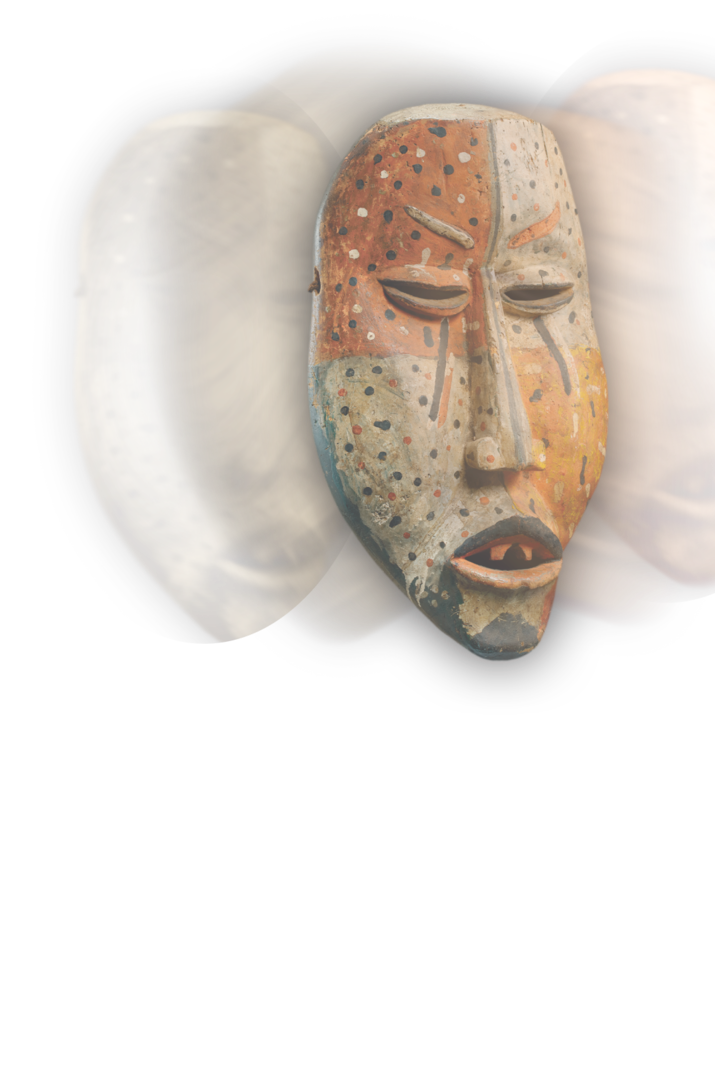
Masks – Transfiguration
The act of wearing a mask was transformative—a transfiguration frequently enhanced by the aid of matching costumes and accessories, rhythmic music and dance. During a masked ceremony, the individual disappeared, giving way to a spiritual or ideational personality and the performer became the embodiment of the mask’s symbolic attributes.
The most powerful masks were thought to possess spiritual power and served as intermediaries between the masked performer and the wider community, on the one hand, and the world of ancestors and spirits on the other. However, not all masks had a spiritual purpose. Masks could be sacred or secular in nature, just as masked performances might fulfil a broad range of functions. Secular performances reinforced the dominant political ideology, social values and institutions, affirming political structures and social hierarchy. Conversely, sacred ceremonies were imbued with magical power. Such performances had the ability to ritually cleanse a village and expunge malignant spiritual forces.
Across Central Africa, masked individuals performed specific movements or dances appropriate to the characters. Zoomorphic masks were worn to embody specific animal traits, whereas anthropomorphic masks represented archetypal heroes, ancestors, or deities. The latter group commonly divided itself along male / female lines, depicting gendered stereotypes who, to varying degrees, represent primordial progenitors.
Central African masks are extremely diverse in style, reflecting the variegated––and sometimes conflictual––worldviews of different political, cultural and ethnic groups, while conveying a sense of the skills and aesthetic interests of their anonymous makers.
The most powerful masks were thought to possess spiritual power and served as intermediaries between the masked performer and the wider community, on the one hand, and the world of ancestors and spirits on the other. However, not all masks had a spiritual purpose. Masks could be sacred or secular in nature, just as masked performances might fulfil a broad range of functions. Secular performances reinforced the dominant political ideology, social values and institutions, affirming political structures and social hierarchy. Conversely, sacred ceremonies were imbued with magical power. Such performances had the ability to ritually cleanse a village and expunge malignant spiritual forces.
Across Central Africa, masked individuals performed specific movements or dances appropriate to the characters. Zoomorphic masks were worn to embody specific animal traits, whereas anthropomorphic masks represented archetypal heroes, ancestors, or deities. The latter group commonly divided itself along male / female lines, depicting gendered stereotypes who, to varying degrees, represent primordial progenitors.
Central African masks are extremely diverse in style, reflecting the variegated––and sometimes conflictual––worldviews of different political, cultural and ethnic groups, while conveying a sense of the skills and aesthetic interests of their anonymous makers.
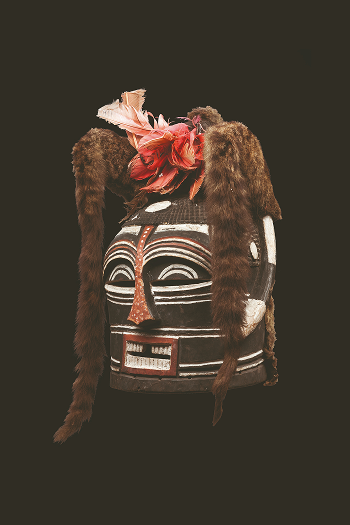
Horned Helmet Mask
Civet fur, feathers, pigments, wood
Songye northwest/Sungu, Luba Kingdom and its neighbours
Early 20th century
Songye northwest/Sungu, Luba Kingdom and its neighbours
Early 20th century
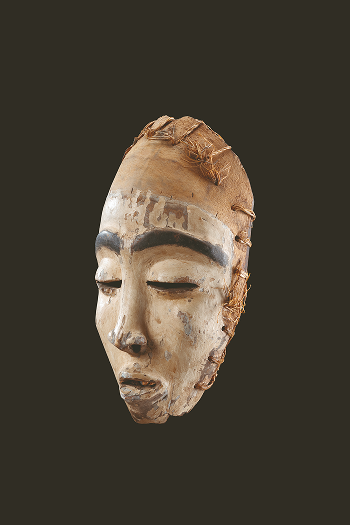
Large White Female Mask
Kaolin, raffia, white and black pigments, wood
Woyo/Kakongo, West Central Africa
Late 19th century
Woyo/Kakongo, West Central Africa
Late 19th century
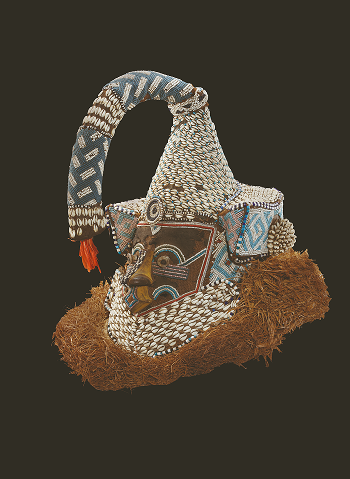
Mukenga Helmet Mask
Aluminium, beads, cloth, cowrie shells, fibre, ochre, raffia, rattan, wood
Kuba, Kuba Kingdom and its neighbours
Early 20th century
Kuba, Kuba Kingdom and its neighbours
Early 20th century
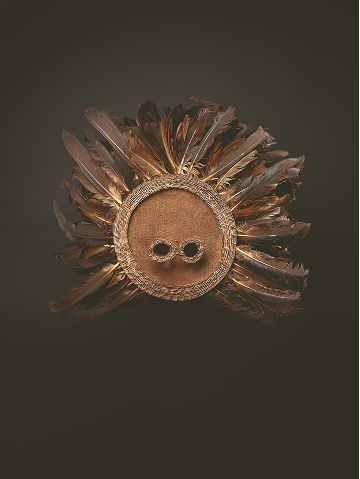
Minganji Mask
Feather, raffia
Pende, West Central Africa
Mid-20th century
Pende, West Central Africa
Mid-20th century
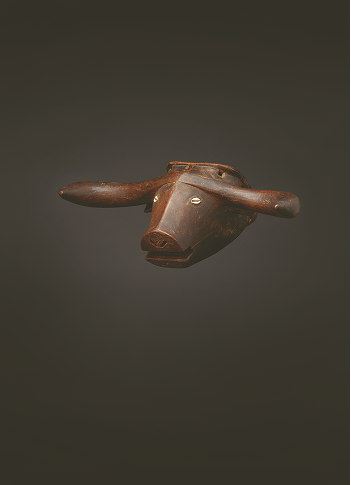
Large Buffalo Mask
Cowrie shells, wood
Tabwa, West Central Africa
Early 20th century
Tabwa, West Central Africa
Early 20th century
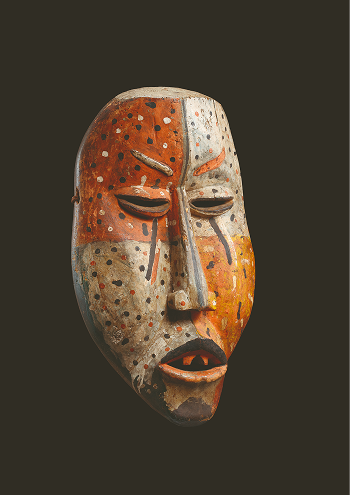
Large Polychrome Male Mask with Costume
Multicoloured pigments, wood
Woyo, West Central Africa
Late 19th century
Woyo, West Central Africa
Late 19th century
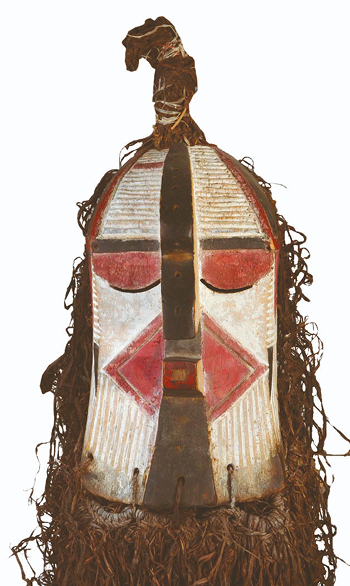
Anthropo-zoomorphic Polychrome Mask
Fibre, pigments, raffia, wood
Luba, Luba Kingdom and its neighbours
Late 20th century
Luba, Luba Kingdom and its neighbours
Late 20th century

Pwo Mask
Fibre wood
Chokwe, West Central Africa
Late 19th century
Chokwe, West Central Africa
Late 19th century
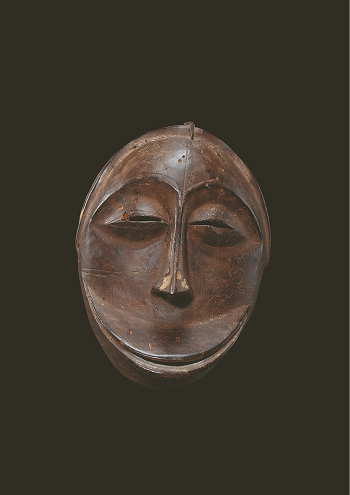
So'o, mwisi gwa so'o, Simian Mask
Wood
Hemba, Great Lakes Region
Before 1987
Hemba, Great Lakes Region
Before 1987